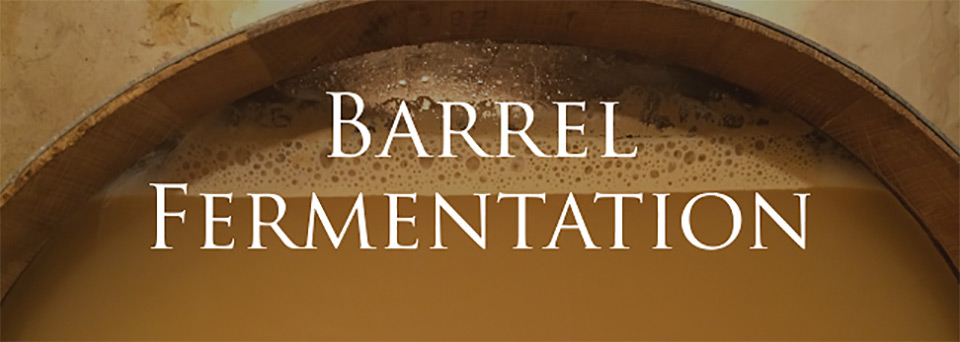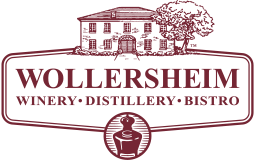As winemaking season continues, we thought we’d talk about one of the more unique parts of the process: barrel fermentation.
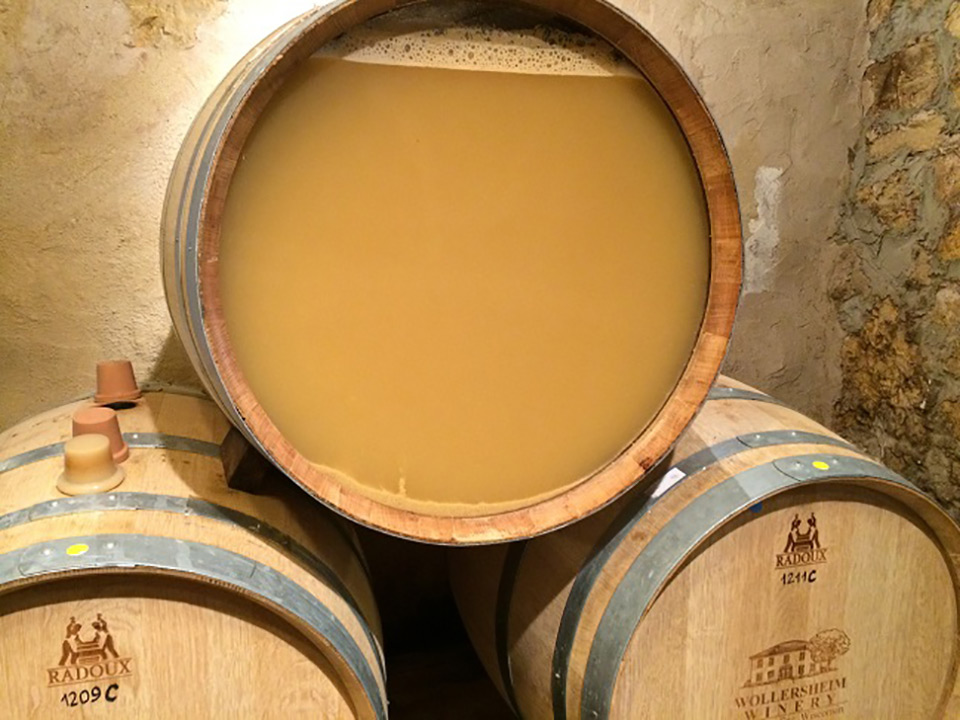
Bubbles forming inside a Chardonnay barrel. Fermentation has begun!
Barrel fermentation is a winemaking method that is traditional to the region of France where Winemaker Philippe grew up. We only use this process on our Chardonnay, and we do so in a modern way.
Our Chardonnay is partially fermented in barrels and partially fermented in stainless steel tanks. When we add yeast to Chardonnay juice, about two-thirds of that juice gets pumped straight into barrels in our cellar, and the remainder goes into stainless steel tanks. The juice ferments in the barrels for about 10 days, then is pumped out and combined with the stainless steel-fermented juice. After that, everything gets pumped back into the barrels for secondary fermentation.
The reason we barrel-ferment only part of our Chardonnay is to give the wine balance and a full range of flavor. Like barrel-aging, barrel fermentation creates a rounder, creamier flavor and texture in a wine. This is because of a few factors, one of which is the oak itself. Oak barrels give wines like Chardonnay buttery texture and vanilla-like flavors, and can also mellow the wine’s acid to give it a softer mouthfeel.
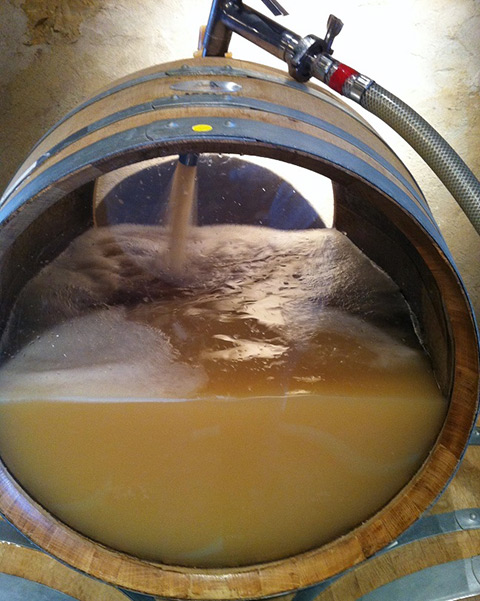
Filling Chardonnay barrels before starting barrel fermentation.

Lees layers settling during barrel fermentation.
Another part of barrel fermentation that affects a wine is the yeast solids, known as lees, which are in the barrel as the Chardonnay ferments. Fermentation on the lees adds creamy texture and nutty flavor to wine. The lees can also soften the wine’s acid, and the tannins that occur naturally in the grape juice and the oak barrels.

Bâtonage.
Unlike a barrel-fermented wine, a stainless steel-fermented wine does not take on any creaminess. Instead, the neutral stainless steel helps the wine to retain some of its fruit and zest. By partially barrel-fermenting our Chardonnay, we get the best of both worlds: the buttery, nutty vanilla from the barrels and lees, and the fruit and acid from the stainless steel.
Our Chardonnay is also different from our sister winery Cedar Creek Winery’s Chardonnay, which is unoaked and spends all of its time in stainless steel tanks until it is bottled. As a result, Cedar Creek’s Chardonnay is lighter and fruitier than its counterpart here at Wollersheim.
